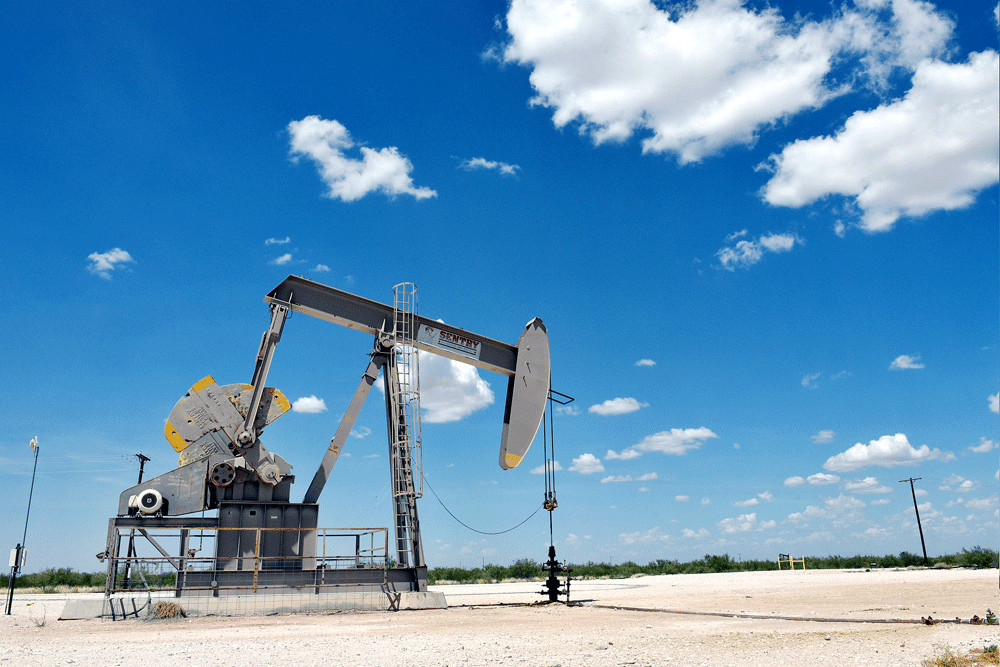Popular Reads
Top Results
Can't find what you're looking for?
View all search resultsPopular Reads
Top Results
Can't find what you're looking for?
View all search resultsBearish demand outlook offsets geopolitical risks
Change text size
Gift Premium Articles
to Anyone
E
conomic uncertainty and a bearish oil demand outlook continue to offset heightened geopolitical risks and keep a lid on oil prices. S&P Global Platts Analytics, however, believes that prices are far from where fundamentals suggest, weighed down by bearish sentiment around the health of the global economy.
“The crude market seems to have lost its risk premium and we think this may be premature,” it said in a recent report.
Platts Analytics expects bigger upward price moves in the immediate months ahead, estimating a 5 million barrel per day (bpd) jump in crude demand in November and December as refineries return from outages. This is expected to result in large crude stock draws and rising prices at the end of the year.
ICE Brent futures prices have fallen back below US$60 per barrel after rising to nearly $72 per barrel in the immediate aftermath of the mid-September attacks on key Saudi oil facilities. A recent attack on an Iranian oil tanker in the Red Sea did little to move markets.
“The market seems unfazed by the significant rise in geopolitical tension in the world, so we have revised oil prices lower. We still see Brent testing the high $60s by year-end but as IMO support fades through 2020, we forecast Brent back down in the low $60s by end-2020,” Chris Midgley, global director of Platts Analytics, said in a recent note.
Contributing to the bearishness was the quick return of Saudi output. The attacks on Saudi Arabia’s Abqaiq crude processing facility and Khurais oil field on Sept. 14 initially took 5.7 million bpd of production capacity offline, or some 5 percent of global oil supplies. The country, however, maintained its supplies to customers, and by Oct. 3 had restored all of its output.
Meanwhile, the world economy continues to send mixed signals.
“Oil demand growth keeps slowing down. While bad weather was part of the reason in the first half of the year, the latest numbers are unequivocally a sign of weak economic activity, especially in the oil-intensive industrial sector,” Midgley said.
OPEC’s crude production suffered its steepest month-on-month fall in almost 17 years in September.
Platts Analytics in September further lowered its 2019 oil demand growth forecast to 960,000 bpd from 1.02 million bpd in August on weak actuals and lower economic growth forecasts in Europe, India and South Korea. Demand growth in 2020 was lowered as well to 1.24 million bpd from 1.34 million bpd in August.
Supply has also been revised down for this year's fourth quarter, led mainly by the Saudi outage, and a weaker outlook for Venezuela. However, supply for 2020 has been revised higher on stronger ramp up expectations of the giant new Johan Svendrup field in Norway.
“Overall, supply will swing from a contraction of 200,000 bpd in 2019 to grow by 2.2 million bpd in 2020,” Midgley said.
Organization of the Petroleum Exporting Countries (OPEC)'s crude production suffered its steepest month-on-month fall in almost 17 years in September to 28.45 million bpd, according to an S&P Global Platts survey, as the Saudi attacks dragged the producer group’s output to its lowest since the wake of the global financial crisis.
Iranian crude production dropped to 2.23 million bpd in September, the survey found, as the country continues to face difficulties in finding willing buyers for its oil. That is its lowest output since August 1988, according to Platts survey data.
In Venezuela, on which United States sanctions targeting its oil sector have also been tightened, crude output shrank to 600,000 bpd in September. Meanwhile, non-OPEC production continues to rise. Platts Analytics has raised its non-OPEC supply forecast to 1.9 million bpd and 2.3 million bpd, for 2019 and 2020 respectively.
The US Energy Information Administration sees US oil production hitting 13 million bpd for the first time in December, two months earlier than it forecast in last month’s report.
Brazil is ramping up production of crude oil from new deep water floating production units. Oil companies operating in Brazil pumped an average of 2.989 million bpd in August, an increase of 7.7 percent from the previous record of 2.78 million bpd set in July, according to Brazil’s National Petroleum Agency, or ANP.
Norway’s $9 billion Johan Sverdrup oil project, which began production earlier this month, is set to pump 440,000 bpd next summer. The OPEC ministers will meet against this backdrop in December.
OPEC, Russia and their allies have not ruled out deeper oil output cuts when they meet next on Dec. 5 and 6 in Vienna, the organization’s secretary general, Mohammed Barkindo, said on Oct. 10, even as its analysis arm revised upward its forecasts of demand for the group’s crude this year and the next.










